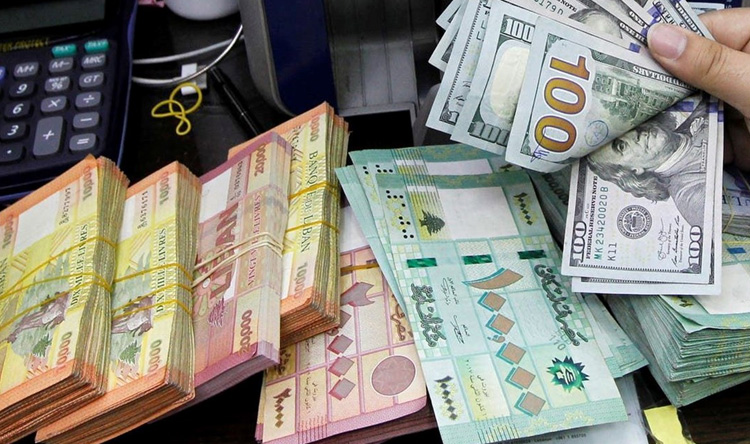The dollar recorded a slight decline in the past days. After it was around 110,000 pounds, approximately in the middle of last week, it decreased during the weekend to about 106,000 pounds, to open trading this week on Monday morning, with a decline to a extent ranging between 100,000 and 102,000 pounds, depending on the regions.
Financial and economic sources consider, through the Lebanese Forces website, that “it is self-evident that we witness during this period a relative stability of the exchange rate of the dollar on the black market,” noting that “the matter was expected, similar to previous periods, for several reasons, the first of which was the recent decision taken by the Lebanese Forces.” The Bank of Lebanon continued to finance the purchase of the dollar for companies and individuals through a banking platform at the price of 90,000 pounds per dollar, after it made its big leap and touched 145,000 pounds a while ago.
And she points out that, “Observers note that the Central Bank is increasing the pace of its intervention through banking to finance dollar purchases through it, to control its rise in the exchange market. The volume of trading on an exchange on the last working day (Friday) last week amounted to 96 million dollars, while Thursday was 90 million dollars and Wednesday was 80 million dollars, while trading on Monday at the beginning of last week amounted to 45 million dollars.
However, the question remains, for the same sources, “about the amount of dollars that the Central Bank decided to consume to prevent the dollar from escaping into the black market in large leaps, and how long it allows to maintain the relative stability of the exchange rate that we are currently witnessing? Note that the Banque du Liban needs about $300 million a month to fund banking and secure state obligations, salaries and wages for public sector employees and retirees, in addition to providing the needs for importing basic goods and commodities. And the amount may sometimes rise to 400 million dollars or more per month.”
And the sources pointed out, “The Banque du Liban is trying to reduce the difference between the price of the dollar on an exchange platform and its price on the parallel market, because it is forced to continue buying dollars from the black market, for the reasons we mentioned. This is to mitigate the losses he incurs to control the market, and to reduce, as much as possible, the consumption of the cash reserves that he owns.”
And she believes, “The refusal of public sector employees in its various administrative and military wires, workers and retirees, to receive their salaries in dollars at the price of 60,000 pounds, and their insistence on the old platform price of 28,880 pounds per dollar, despite the difficulty of responding to their demand, makes it difficult for the Banque du Liban to control the exchange market. Even if they agreed to the previous price of 45,000 pounds, which the government is trying to adopt as a compromise, and they backed off from escalation, strikes and sit-ins, the difference remains significant with the actual market price of the dollar.
And she explains, “In this case, the Banque du Liban would have bought the dollar from the black market at the numbers of 130,000 pounds and 140,000 pounds per dollar, for example, to sell it on the platform for 45,000 or perhaps 60,000 pounds, which means that its losses will be large. While the losses would have been less if the rate of 90,000 pounds per dollar had passed for employees as it is currently through an exchange, as the difference is not significant with the black market today, which has decreased to the limits of approximately 100,000 pounds, if it continues at this rate, of course.
The same sources liken the scene, that “(do not shake the dollar standing on the shoulder), so to speak, because the result in all cases, as it turns out, is that the central bank loses in this process.” And she continues, “There are not many options in front of him, and all these solutions are temporary, with everyone’s surrender.”
And she adds, “Economic, financial, and monetary solutions are essential and necessary, and have certainly become obligatory, yesterday the day before today, and successive governments were late in taking the required decisions and reforms, but the solution begins with politics. And as long as there is no change in approach and practice, and even people, it means that we are still in trouble, and the dollar may rise again at any moment.
Any copying process without mentioning the source exposes its owner to legal prosecution


